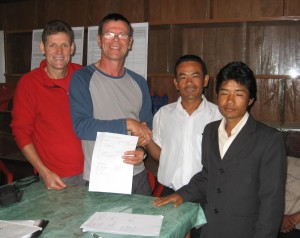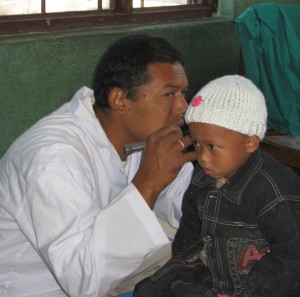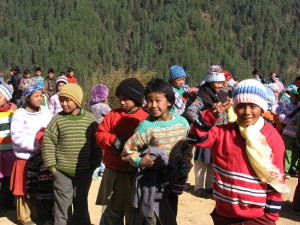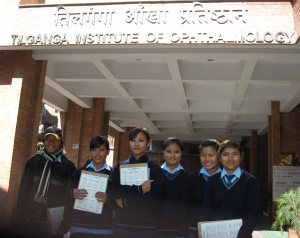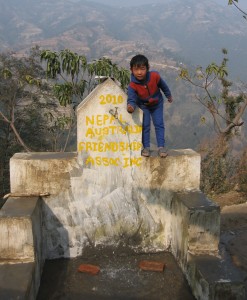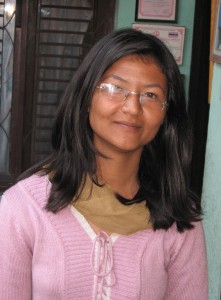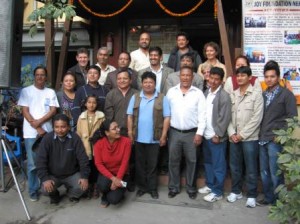This report was submitted at the AGM held on on 5 April 2011
The Big Picture
In 2010, NAFA allocated more funds ($141,000) to more projects (33) in Nepal than any year since the Association was established in 1989. These projects spanned the range of NAFA priorities, with 19 allocated to education projects, 8 allocated to health/disability projects and 6 to other community based projects, including water/electricity infrastructure and child care.
In comparison, back in 2004, NAFA allocated just under $18,000 to 5 projects, comprising a small, existing child sponsorship program with a focus on students with a disability, two newly established child sponsorship programs for education at Prisoners Assistant’s Nepal children’s home in Kathmandu and VSN school in Thimi, and two longstanding health-related projects – subsidy of a remote cataract eye surgery clinic per annum and subsidy of Tawal health clinic salaries.
This phenomenal growth in NAFA’s project portfolio may have peaked in 2010 and is a credit to our dedicated group of supporters. It is time to reflect and celebrate what has been achieved in this past year.
NAFA’s projects in Nepal
NAFA’s portfolio of ongoing projects continues to focus on health, education and other community based infrastructure projects, with women, children and remote communities being the priority target groups. All NAFA projects are locally managed and NAFA expects the local community to make a contribution towards each new infrastructure-related project, for example, volunteer labour to bring materials to the site and help in construction.
NAFA executive officers also visit all projects in Nepal (at their own expense) at least once a year to ensure funds allocated are used in accordance with the approved purpose and the project has been successfully completed. NAFA also guarantees that 100% of donations to NAFA go directly to Nepal.
Health
As has been the case since NAFA’s inception, NAFA sponsored a remote eye screening and cataract surgery clinic run by the Tilganga Eye Centre. This year’s two day clinic was held in the remote village of Jalbire, with a total of 608 adults and children screened and 104 patients undergoing successful cataract surgery. Over the years, these clinics have restored the eyesight of thousands of cataract patients living in remote villages who could not afford to travel to Kathmandu for their operation.
Since co-funding (with AusAid) the construction of the health clinic over ten years ago, NAFA continues to subsidise the salaries of three health workers at the Tawal health centre, which provides primary health care to over 4,000 people living in Tawal and other nearby villages. In 2010, NAFA funded a solar project that will provide reliable electricity to the facility, protecting valuable computer and other audiology equipment used in hearing clinics and providing 24 hour lighting for this important service. A small, solar-compatible camping-size fridge was also purchased which will enable the clinic to store vaccinations and in the future electricity will run a microscope that will enable health workers there to do blood-testing.
In 2010, NAFA established the HearingNepal Program through the dedicated volunteer work and financial generosity of Sue and Lew Tuck from Whitsunday Hearing. During the year the first ever hearing clinic was held in the remote village of Tawal and at VSN school in Thimi, providing hearing assessment and hearing devices to children and adults. Altogether, nearly 20 hearing aids were fitted to those needing them at Tawal and Thimi.
Modern audiology equipment was also donated through the program and by Sue and Lew personally to a small primary ear care service based in Kirtipur, Kathmandu, the Nepalese Association of Hard of Hearing (NAHOH) through the Program. The establishment of this program and ongoing commitment by Lew and Sue to undertake their volunteer work in Nepal complements nicely NAFA’s longstanding support of eye care through its support of Tilganga’s eye screening and cataract surgery remote clinics.
NAFA also subsidised health clinics conducted at a carpet factory in Thimi. This subsidisation includes free medicine for families who otherwise would not be able to afford the medication. This project was evaluated by two social work students and the findings will help improve the effectiveness of this important initiative in 2011.
It was another busy year for distributing jumpers and beanies knitted by approximately 80 women in Brisbane. In 2010, thanks to these knitters, the generosity of Singapore Airlines and Thai Airways who provide 10 Kg excess baggage allowance for NAFA supporters who bring the bags of jumpers over to Nepal, approximately 700 jumpers and beanies were distributed in 2 villages, Lumsa & Shyama in Solu Khumbu & Tawal. Another 300 small jumpers were distributed to government schools and needy children in shelters in the Kathmandu valley. Baby and small jumpers were also distributed at two medical clinics at Thimi and Sankhu.
Finally, in support of people with disabilities NAFA provided funds to purchase a range of much needed equipment and a storage cupboard for the Thimi Day Care Centre and provided funds for a training workshop held for parents and staff in the Kathmandu-based Association for the Welfare of Intellectual Handicapped (AWIH), which operates a day care centre for children with intellectual disabilities.
Education
I said in my 2009 President’s Report that I couldn’t imagine how we were ever going to be able to match the breadth of education-related projects that NAFA supported that year. Well it was surpassed, with 19 school based projects supported in 2010, compared to 11 the previous year.
NAFA has two child sponsorship programs at Prisoners Assistance (PA) Nepal in Kathmandu/Sankhu and Vinayak Shiksha Niketan (VSN) School in Thimi, with the number of children sponsored for education by NAFA now totalling 107 children, and almost $39,000 sent over to support their education. Over the years we have seen what a big difference this program has made to the children and their families.
At PA Nepal children’s home in Sanku, Brenda Hazelwood continued with her weekly (where possible) craft sessions with the girls there. These sessions teach the children different craft, knitting and sewing skills which they are now using in a very practical sense to make garments that they can use now and these are skills they will be able to use throughout their lives.
NAFA’s focus now is beyond the student’s success in passing the national exams held at the end of Class 10 to obtain their School Leaving Certificate (SLC). They face enormous disadvantages from their backgrounds to continue past this minimum academic qualification. In the case of VSN sponsored children are from poor families in this pottery/farming town, with many of the sponsored children’s families working and living in a local carpet factory. Most of the children in PA Nepal have parents who are in prison or have either been abandoned by their parents or are orphans. Children at Tawal come from poor subsistence farming backgrounds.
NAFA’s Further Education and Training (FEAT) program aims to partner with child sponsors and families to provide opportunities for young people involved in NAFA and Joy Foundation Nepal supported projects to undertake vocational training or post Grade 10 (college years 11 and 12) and Grade 12 (Bachelor) study to improve their employment chances. Through the program, NAFA is now supporting young people in PA Nepal study Pharmacology, Hotel Management and Humanities and graduates from VSN school study Nursing, Health, Management and Accountancy. NAFA has also supported a young man from Tawal undertake training in stone-cutting/jewellery making, using gems that can be found in the rocks around this hilly region village.
In addition to continuing to sponsor two teachers at the school in Tawal, NAFA also provided funding in 2010 for a number of school-based projects (Patale, Kophu and Lumsa) in the Solu Khumbu and Okhaldunga districts in the Everest region, Tawal and Kutal in the hilly region of the Ganesh Himal and in schools located in other villages (Lapesphedi, Nayagau) and towns (Thimi and Kathmandu).
Projects funded in 2010 included water/toilet infrastructure, classroom/roof replacements, skylights, library shelving and tables and library/science lab resources. In supporting the construction of two classrooms for Grades 9 and 10 at the school in Tawal, NAFA partnered with the Non-Resident Nepalese Association (NRNA) of Australia with all funds allocated to this project ($5,000 by NAFA and a matching $5,000 by NRNA) raised by Nepalese-Australian communities in Brisbane and elsewhere in Australia.
Child care
NAFA continued its financial support to two child care centres operated by the Butterfly Foundation in Pokhara. These centres support low-caste families who have moved to Pokhara from villages in search of casual day labour work.
Electricity and water infrastructure
NAFA’s largest project in 2010 was a $26,000+ micro-hydro project for the village of Tawal. When completed this project will provide electricity to 200-250 households in Tawal and Tawal Besi, as well as hydro electricity to the school and health clinic. Electricity is an economic, health, education, environmental, recreation and general communication issue for people in remote villages.
It saves money that would need to be spent on the ever-increasing cost of kerosene and will also be a catalyst to small business development. By not using kerosene, it eliminates that source of harmful toxic fumes in village households and improved lighting is safer for those cooking. Lights are 10 times more effective than kerosene lighting for study in the evening, helping support the education of children attending school. Electricity from the renewable water sources of Nepal also reduces their use of fossil fuels. Finally, electricity connects families with the outside world, from listening to the evening news on the radio to the charging of mobiles (which are cheap in Nepal) so that family members in the remote villages can connect with family members in Kathmandu and elsewhere.
In addition to school-based water infrastructure projects, NAFA supported a number of remote community water infrastructure projects in 2010. This included providing funds for a water infrastructure project a Tawal Besi in the Dhading district and replacing the water tank at Mulkarka in the Solu Khumba district.
A look to 2011
NAFA will continue to support projects that achieve positive and sustainable health, education and other development-oriented outcomes for disadvantaged communities and individuals in Nepal.These projects will include continued support of NAFA’s twelve ongoing health, education and child care programs, as well as projects that complement these programs. For example, NAFA will support the holding of the first ever primary ear screening clinic in Tawal, complementing its HearingNepal Program established in early 2010.
NAFA will also continue to provide financial support for important one-off education, health and infrastructure projects in areas NAFA executive officers and supporters are able to access, including the Dhading, Solu Khumbu and Okhaldunga districts, Pokhara and those accessible from Kathmandu.
To ensure “sustainability”, it has been NAFA’s underlying belief that people in the key services of health and education are as important as buildings and other infrastructure. NAFA therefore recognises the need for ongoing financial support for NAFA’s core projects that involve ongoing expenses such as salaries (teachers, health workers and child care assistant), rent (child care centre) or commitments for annual sponsorship (remote cataract eye surgery clinic).
NAFA continued to have success in 2010 attracting generous donors willing to either support important one-off projects such as the micro-hydro project in Tawal or make regular donations towards NAFA’s ongoing projects in health and education. These donations, at times topped up from NAFA’s general funds, continue to make a real difference in particular to the lives of people living in remote villages. NAFA will also continue to seek to work in partnership with other like-minded donors such as Joy Foundation Nepal, Non-resident Nepalese Association (NRNA), Nepaleducaid (Austria) and smilebacktome, Spain, the United Nations and the Nepalese government to improve the wellbeing of the Nepalese people, particularly those living in remote communities.
In 2011, NAFA will review its portfolio of projects and its current mix between ongoing and one-off projects and it will continue to draw it’s loyal support network for donations that support NAFA’s existing project portfolio, as well as any new projects considered for approval. I am confident this support will enable NAFA to continue its good work in Nepal for years to come.
Thank you for supporting NAFA
Although NAFA is a small association, its projects are making a real difference in improving the lives of particularly disadvantaged children, families and communities in Nepal. However, these improvements wouldn’t be realised without the commitment and plain hard work of volunteers here in Australia and some very competent and committed staff and volunteer boards that comprise our Nepali partners in Nepal.
There is the NAFA management committee and other members who come to meetings every month, make decisions and undertake administrative and organising tasks associated, for example, with NAFA’s child sponsorship program that continues to make such a difference to the lives of families in Nepal. The NAFA management committee is supported by a large number of volunteers who help with events and other fundraising efforts. These include the distinguished “Red Shirts” that are visible at the Nepalese New Years Dinner and Nepal in the Park. There are also many others, including those wonderful women who knit jumpers and those volunteers who help raise funds through the market stalls, sale of chocolates and other fundraising ideas thought up by committed NAFA supporters.
I would like to express particular appreciation to the Nepalese community in Brisbane who generously support both NAFA and the Nepalese Association of Queensland (NAQ). We could not do either of our two major fundraising events without their support. We value their partnership both on the fundraising side and on their role in supporting NAFA throughout membership on NAFA’s management committee.
In 2010, creative fundraising ideas included the Health Mega Marathon in which Ray Baker and Kylie Gilbert raised $12,700 towards NAFA health projects by trekking 100 kms in 24 hours at Mt Glorious. In another creative idea, Helen Zada coordinated Challenge Yourself, which raised $3,025 to help a disadvantaged student who had graduated from VSN Thimi fulfil her life-long dream to study nursing. Supporters do this volunteer work without recompense and in fact incur costs personally because they believe in NAFA’s mission. This allows NAFA to realise its promise to those making tax deductible donations that every $ donated will be spent directly on projects in Nepal.
Executive members, including in particular Ross and Brenda Hazelwood also spend significant time each year in Nepal, at their own expense, identifying and assessing new applications, visiting and assisting with all of NAFA’s projects and inspecting completed projects. Ross also updates the child profiles of children sponsored at PA Nepal and Brenda coordinates not only the distribution of jumpers and beanies in Nepal, but also the purchase of goods for sale at NAFA market stalls back in Australia. Brenda also sources beads and material from retail shops in Kathmandu to create jewellery, felt items and other saleable items for the markets, which brought in almost $10,000 for NAFA in 2010.
In 2010, other NAFA supporters also spent significant time in Nepal. Lew and Sue Tuck established NAFA’s HearingNepal Program in January 2010 and spent a lot of their own time and funds in 2010 getting the program underway and ensuring its sustainability by partnering and supporting the Nepal Association of Hard of Hearing (NAHOH). Kylie Gilbert joined us in the January 2010 visit to Tawal and then joined Ross and Brenda in their annual trip to the Solu Khumbu to visit NAFA supported projects and assess new proposals. Other NAFA supporters visited and volunteered their time and expertise in NAFA projects, including Carol Davis’s group, Di Seaniger, Debbie Leigh and Stewart Jones. Thanks all.
I would also like to thank all the individual and corporate donors who support NAFA. It isn’t easy trying to decide which of the many worthy aid and other charitable organisations to support and we very much appreciate those who in many cases continue to support NAFA year after year. We also appreciate those individuals and businesses who have donated prizes which help make our fundraising events successful.
In Nepal, our Project Coordinators volunteer their time to help their communities: Phurba Sherpa for the Solu Khumbu/Okhaldunga districts; Chandra Tamang for the Tawal area; Surendra Prajjapati for Thimi; Indira Magar Rana for PA Nepal children’s home and Govinda Pahari for Butterfly Foundation’s child care centre. NAFA’s success in Nepal relies on the commitment and wisdom of these Coordinators.
NAFA would also like to thank the staff (Ramita, Pradip, Petra and Karmala) and board members of Joy Foundation Nepal under the leadership of Mr Raju Shrestha for supporting NAFA’s work in Nepal. Joy jointly funds a number of projects, provides office and storage space for NAFA executive members and NAFA projects. Joy staff also support NAFA in assessing and monitoring projects, including help with translation, culture and program-related advice, community work, student placement supervision, finance and other general administration.
In completing my fourth year as President of NAFA I would like to thank all of you for supporting NAFA in 2010. Deborah and I look forward to continuing to make a small contribution to helping NAFA achieve its mission of making a real difference to people’s lives in Nepal.
Rod Setterlund
President
April 2011

